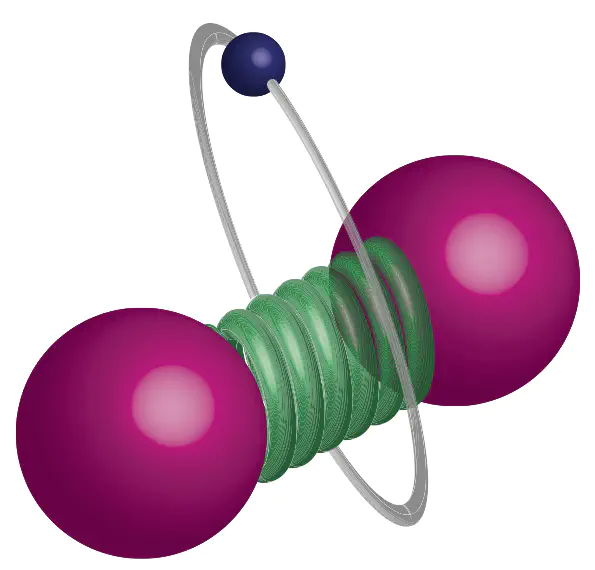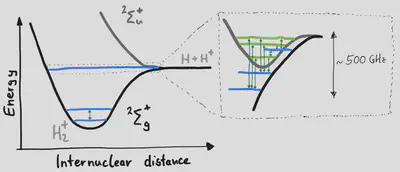Weakly Bound Molecular Ion Clocks

Summary
Most existing molecular ion clocks operate starting from the vibrational ground state. This is because the lowest vibrational level is usually the only one that can be prepared with some selectivity either by photoionization or electron impact ionization. For heteronuclear molecules with non-zero dipole moment an unselective preparation using electron impact ionization can be used, because after a certain time (on the order of milliseconds) the molecule will have decayed to the vibrational ground state via fluorescence. Homonuclear molecules have a vanishing dipole moment and can only decay via electric-quadrupole emission - with lifetimes on the order of days. Photoionization with a laser source tuned just above the lowest ionization threshold is in this case used to selectively create ions in the lowest rotational state. A selective ionization to produce excited vibrational states was so far not possible.
Weakly-bound molecular ion clocks are an interesting tool that show an enhanced sensitivity to peculiar physical effects. This is caused by the degeneracies of these states close to the dissociation threshold. The usual hierarchy of motion - the basis of the Born-Oppenheimer approximation - can be completely reversed: the rotational motion is faster than the vibrational motions, which is faster than the electronic motion.

Various laser sources in the visible and (vacuum) ultraviolet wavelength range are used to excite Rydberg states of the hydrogen molecule. Using small electric fields, the Rydberg states are field-ionized to selectively produce H$_2^+$ in the desired weakly bound states. The molecular ions are held in an ion trap (a linear Paul trap) to precisely measure its ‘clock’ frequency in the microwave range. Furthermore, this project will take advantage of the extremely high precision of the theoretical models describing this simple molecule, a precision which far exceeds that of all other molecules and even most atoms.

Together, the theoretical framework and results of the clock measurements form a unique system that will shed light on several intriguing pending issues in physics, ranging from the (still not understood) role of nuclear-spin-induced symmetry breaking within the framework of quantum electrodynamics, to the possible existence of time-varying fundamental constants and hypothesized spin-dependent ‘fifth forces’. The obtained experimental results will serve as benchmarks for existing and emerging molecular quantum chemistry calculations. The results may also lead to the first detection of hydrogen molecular ions in space (through the Atacama Large Millimeter Array telescope), where this species is believed to play a fundamental role in the chemistry of the interstellar medium and the formation of the first stars in the universe. Furthermore, the techniques developed in this project hold promise for future production of molecules made of anti-matter and new CPT invariance tests.